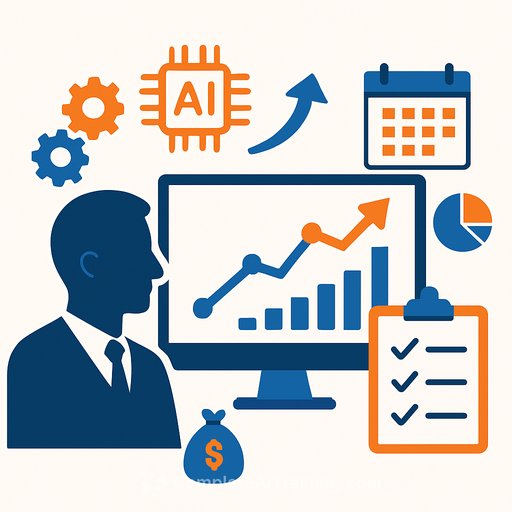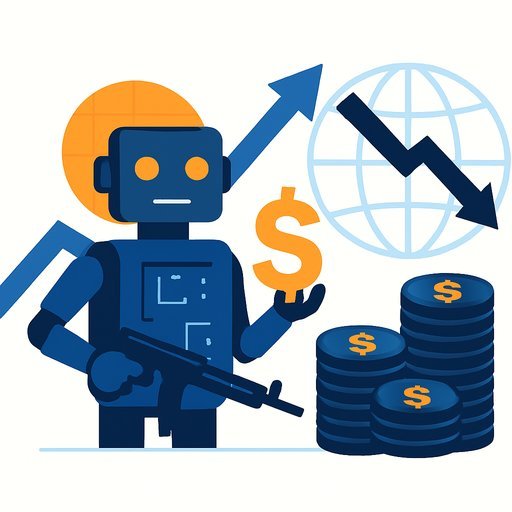Finance through 2026: AI, agility, and proactive leadership
A new global survey of 1,326 senior finance leaders (mostly CFOs at $1B+ companies) highlights how finance is being rebuilt for speed, clarity, and measurable value. The headline: scenario planning, AI, and finance-led cost management are moving from experiments to operating systems. Deloitte's analysis breaks down five trends that will define how high-performing teams execute next.
Source: Deloitte Finance Trends
1) Scenario planning and agile governance
Supply chain volatility and tight budgets are forcing trade-offs between cost and growth. About three-quarters of leaders say resources are constrained, so priorities are clustered at the top: prepare for external shocks, adopt new technology, and reduce costs-at the same level of urgency.
Winning teams run quarterly scenario cycles, tie funding to triggers, and push decisions closer to operators with clear guardrails. Finance sets the cadence; business owners execute inside it.
2) Finance is now a strategy engine
Most leaders (57%) say finance is a primary strategy influencer. The lever is technology: leaders who push AI and cloud move faster and see more impact. Nearly half (48%) of these leaders use cloud to optimize costs, versus 33% in support roles.
One example: at HPE, finance used AI to upgrade from stewardship to proactive leadership-arming teams with data, automating repeatable work, and reallocating time to enterprise value.
3) Finance-led cost management delivers
Ownership matters. Thirty-six percent of finance leaders (and 42% of CFOs) own cost management outright. Of those with ownership and the right tools, 47% consistently hit savings targets, versus 39% in support roles.
Effective playbooks feature zero-based principles, rolling reviews, and transparent accountability. Cost is treated as a product with owners, SLAs, and dashboards-not an annual event.
4) AI is in play, AI agents are the gap
Almost every finance team is testing AI; 63% report full deployment and active use. Yet only 21% say AI is already delivering clear, measurable value, and just 14% have fully integrated AI agents into daily finance operations.
What's in the way? Early-stage teams cite legacy tech more often (41% vs. 31% for AI leaders). ROI proof is also tougher early (30% vs. 21%). The fix: track a broader value set-quality, speed, sentiment, and trust-not just dollar savings.
5) Tech talent inside finance
By 2026, 64% of finance teams plan to add deeper technical skills. Priority skills: AI, automation, data analysis, and integration. The best teams blend domain expertise with product thinking, analytics, and process design.
Upskill fast with role-aligned, project-based learning. Curate AI tools for finance, then run 90-day sprints to prove value and scale what works. See curated AI tools for finance
A CFO-ready action plan
- Scenario cadence: Monthly flash + quarterly scenarios. Tie growth bets to trigger-based funding. Track cost of delay.
- Agentize 2-3 workflows in 90 days: AP anomaly detection, cash application, close checklists, policy Q&A.
- Measure AI beyond dollars: Cycle time, forecast accuracy, error rates, adoption, and stakeholder trust.
- Cloud cost discipline: Tagging, chargeback, rightsizing, and automated budgets. Make unit economics visible.
- Modernize the core: Standard chart of accounts, clean data model, APIs, and event streams. Retire high-friction legacy.
- Cost ownership: Name owners, KPIs, and savings targets. Review monthly with a single source of truth.
- AI governance: Model inventory, data lineage, human-in-the-loop, and usage policies. Publish what "good" looks like.
- Talent mix: Hire T-shaped analysts (finance + data). Pair FP&A with automation engineers on shared OKRs.
Metrics that prove progress
- Forecast speed and accuracy: Cycle time, reforecast frequency, variance vs. plan.
- Close efficiency: % tasks automated, manual journal entries per FTE, days to close.
- AI adoption: % processes with embedded agents, automation coverage, model performance and drift.
- Cost control: Unit costs by function, savings realized vs. plan, % spend with named owner.
- Cloud efficiency: Cost per workload, reserved vs. on-demand mix, idle resource rate.
- Skills depth: % team with AI/automation certifications, training hours per quarter, internal mobility.
Bottom line
The finance model is getting leaner, more technical, and more embedded in strategy. Teams that standardize scenario planning, take ownership of cost, and move from AI pilots to agent-driven workflows will set the pace through 2026.
For the full research and data, see Deloitte's analysis.
Your membership also unlocks:






